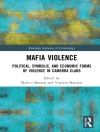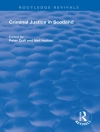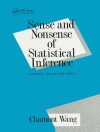The meth epidemic has touched every State in the country, draining resources, causing serious environmental damage and destroying lives. SAMHSA’s Drug Abuse Warning Network [DAWN], showed that in the early to mid-1990’s, methamphetamine use was on the rise. The treatment episode data confirmed this: treatment admissions for meth use grew through the 1990’s, increasing fivefold between 1992 and 2002. The most recent treatment episode data show that 15 States have higher rates of admission for amphetamine use, largely meth, than for heroin or cocaine. In just those 15 States, there were over 102, 000 admissions for amphetamine treatment, versus 73, 000 combined admissions for heroin and cocaine. Nationwide, there were more than 151, 000 admissions for amphetamine treatment. To say that meth is highly addictive is an understatement, and it presents unique clinical challenges for treatment. Meth produces a short, intense rush, followed by a long-lasting sense of euphoria. Addiction to meth is caused by the way the drug alters the brain and leaves the users to compulsively seek more meth. Chronic use of the drug also leads to increased tolerance, prompting the user to take higher or more frequent doses of the drug to get the same effect. Moreover, meth users may also develop severe psychotic and paranoid behavior. Meth users who do seek treatment often relapse and continue chronic meth use. There are currently no medications that demonstrate effectiveness in treating meth addiction. But intense behavioral interventions have proven effective. The largest controlled study of meth treatment conducted by the Center for Substance Abuse Treatment demonstrated positive post-treatment outcomes for 60 percent of the treatment sample, which reported no meth use and which had urine samples that tested negative for meth. Nonetheless, traditional treatment programs for alcohol and marijuana are inadequate for dealing with the unique clinical challenges presented by this drug. Such treatment programs, sometimes the only treatment option available in communities hardest hit by the meth epidemic, result in very poor post-treatment outcomes for meth users. This represents our greatest challenge: how do we ensure that our Federal treatment efforts are addressing the meth epidemic in measurable ways in the areas hardest hit by the scourge, in many cases very rural areas?
Nathan B Talcott
Addressing Methamphetamine Abuse [PDF ebook]
Addressing Methamphetamine Abuse [PDF ebook]
Mua cuốn sách điện tử này và nhận thêm 1 cuốn MIỄN PHÍ!
định dạng PDF ● Trang 103 ● ISBN 9781617281242 ● Biên tập viên Nathan B Talcott ● Nhà xuất bản Nova Science Publishers ● Được phát hành 2018 ● Có thể tải xuống 3 lần ● Tiền tệ EUR ● TÔI 7219636 ● Sao chép bảo vệ Adobe DRM
Yêu cầu trình đọc ebook có khả năng DRM












